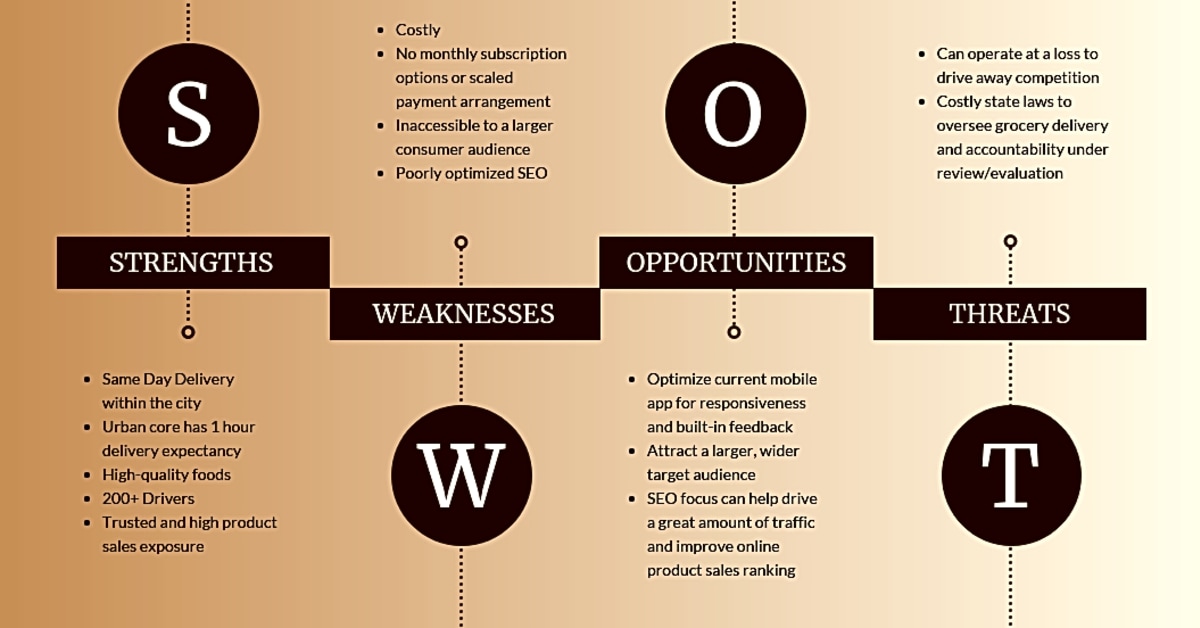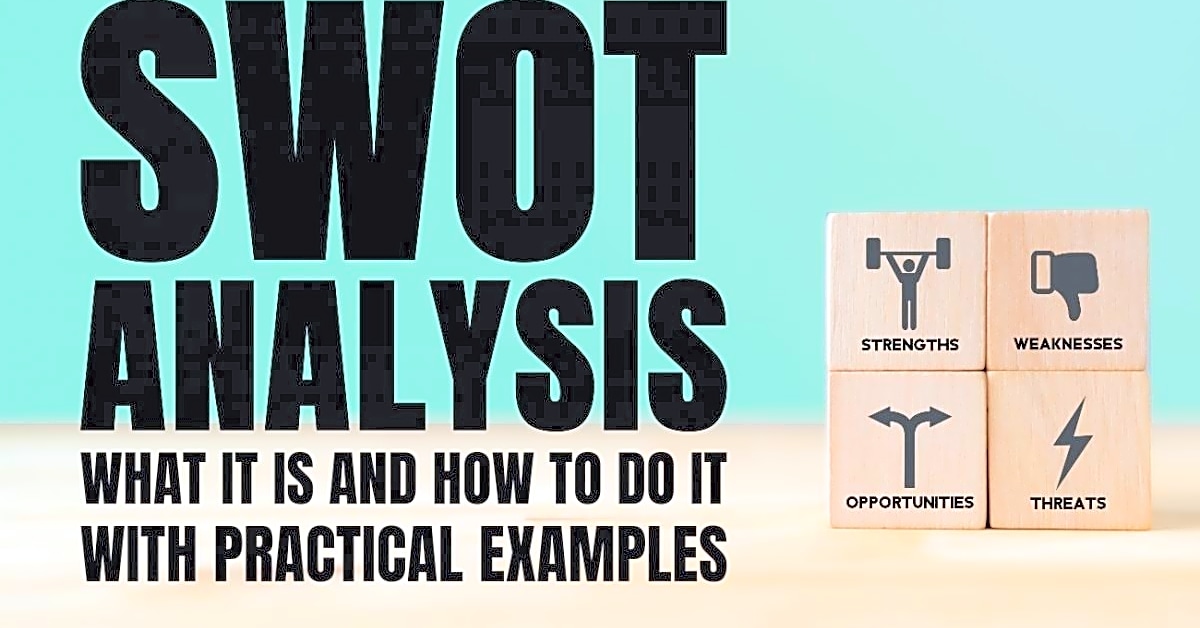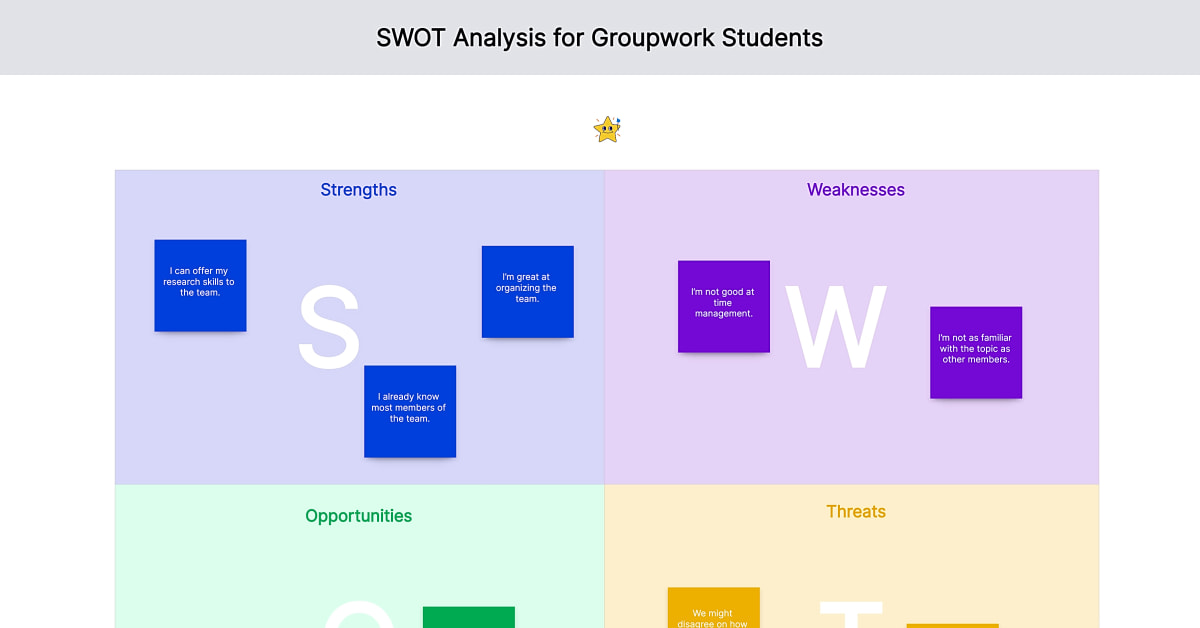A SWOT analysis is a powerful tool used by businesses to evaluate their strengths, weaknesses, opportunities, and threats. It provides a comprehensive overview of the company’s current position and helps identify areas for improvement and potential growth. However, as businesses operate in an ever-changing environment, it is essential to regularly review and update the SWOT analysis to ensure its relevance and effectiveness. In this article, we will explore the importance of modifying your SWOT analysis over time and how flexibility and adaptability are key factors in this process. By the end, you will have a better understanding of how to keep your SWOT analysis dynamic and useful for your business’s success. So let’s dive into the world of SWOT analysis and discover how it can help your business stay ahead of the game.
SWOT analysis is a widely used tool for analyzing and evaluating a business or individual’s strengths, weaknesses, opportunities, and threats. It provides a structured framework to identify and assess internal and external factors that can impact the success of a venture or personal development.
In order to conduct a SWOT analysis, you first need to understand what each component represents. Strengths refer to the positive aspects of your business or personal characteristics, such as skills, resources, or reputation. Weaknesses are the negative aspects that need improvement, such as lack of experience or limited resources. Opportunities are external factors that can contribute to growth or success, while threats are potential risks or obstacles that could hinder progress.
Once you have a clear understanding of the basics of SWOT analysis, it’s important to recognize the need for modification over time. As businesses and individuals evolve, so do their strengths, weaknesses, opportunities, and threats. What may have been a strength in the past may no longer be applicable, and new opportunities or threats may arise.
Modifying your SWOT analysis on a regular basis ensures that it remains relevant and effective in guiding your decisions and actions. It allows you to adapt to changing circumstances and make informed decisions based on current factors.
There are various tools and frameworks that can assist you in modifying your SWOT analysis. One popular approach is the TOWS Matrix, which helps identify strategies by matching internal strengths with external opportunities, and internal weaknesses with external threats. This can help you develop a more comprehensive and strategic plan of action.
Another useful tool is the PEST analysis, which looks at political, economic, social, and technological factors that can impact your business or personal development. This can provide valuable insights into potential opportunities and threats that may not have been initially considered in your SWOT analysis.
Now let’s take a look at some real-life examples of how modifying a SWOT analysis can be beneficial. For a business, a new competitor entering the market could be seen as a threat. By modifying the SWOT analysis, the business may identify that their strong customer loyalty is an opportunity to differentiate themselves from the competition.
For an individual, a change in job responsibilities could be seen as a weakness in their current SWOT analysis. However, with modification, they may realize that this change presents an opportunity for growth and development in new skills.
In conclusion, modifying your SWOT analysis over time is crucial for its effectiveness and relevance. It allows you to adapt to changing circumstances and make strategic decisions based on current factors. Utilizing tools and frameworks can assist in this process, and real-life examples can help you better understand the concept. Remember to regularly review and modify your SWOT analysis to ensure continued success in your business or personal development journey.
Real-Life Examples
One of the best ways to understand how to modify your SWOT analysis over time is by looking at real-life examples. These examples can provide valuable insights and strategies for adapting your SWOT analysis to changing circumstances.
For instance, let’s take a look at a company that originally had a strong market position in their industry. However, with the rise of new competitors and changing consumer preferences, they realized the need to modify their SWOT analysis. By identifying and addressing weaknesses in their product offerings and capitalizing on opportunities in emerging markets, they were able to maintain their competitive edge.
Another example could be a personal SWOT analysis for career development. As an individual’s skills and goals evolve, their SWOT analysis may need to be updated to reflect these changes. By recognizing new strengths and weaknesses and identifying potential opportunities and threats in their desired industry, individuals can create a more effective career development plan.
Learning from these real-life examples can help you understand the importance of adapting your SWOT analysis over time and how it can lead to improved outcomes for both businesses and individuals.
Tools and Frameworks for Modifying Your SWOT Analysis
When it comes to modifying your SWOT analysis, having the right tools and frameworks can make the process much easier and more effective. These tools and frameworks provide structure and guidance, ensuring that your modified SWOT analysis is thorough and accurate.
One useful tool for modifying your SWOT analysis is the PEST analysis. PEST stands for Political, Economic, Social, and Technological factors, and it helps you identify external factors that may impact your business or organization. By incorporating a PEST analysis into your SWOT analysis, you can gain a deeper understanding of the larger environment in which your business operates, allowing you to make more informed decisions when modifying your SWOT analysis.
Another helpful framework for modifying your SWOT analysis is the TOWS matrix. This matrix involves matching internal strengths and weaknesses with external opportunities and threats, helping you identify strategic alternatives and potential courses of action. By using the TOWS matrix, you can not only modify your SWOT analysis but also develop a more comprehensive strategy for your business or organization.
The Basics of SWOT Analysis
A SWOT analysis is a strategic planning tool that helps businesses and individuals assess their strengths, weaknesses, opportunities, and threats. It can be used for any type of organization or even for personal development. Conducting a SWOT analysis involves identifying internal and external factors that can impact the success of a project, business, or individual. This includes understanding the organization’s strengths and weaknesses, as well as the opportunities and threats in the external environment.
The process of conducting a SWOT analysis involves four key steps:
- 1. Identify your strengths: These are the core competencies of your organization or personal skills that give you an advantage over others.
- 2. Recognize your weaknesses: These are areas where you may be lacking or need improvement.
- 3. Explore opportunities: These are external factors that can help you grow or achieve your goals.
- 4. Identify potential threats: These are external factors that could potentially harm your organization or hinder your progress.
In order to conduct a successful SWOT analysis, it’s important to be honest and thorough in identifying each of these factors. This will provide a comprehensive understanding of the current state of the organization or individual, and help guide future decision-making.
The Importance of Modifying Your SWOT Analysis
SWOT analysis is a valuable tool that helps businesses and individuals identify their strengths, weaknesses, opportunities, and threats. It allows for a comprehensive evaluation of the current situation and aids in strategic decision-making. However, as time goes on, the factors that make up a SWOT analysis are not static and can change drastically, making it crucial to modify your SWOT analysis over time.
One of the main reasons why it is important to modify your SWOT analysis is because the business environment is constantly evolving. What may have been a strength or opportunity in the past could now be a weakness or threat. For example, a company’s strong online presence may have been a major strength a few years ago, but with the rise of social media, their lack of social media presence could now be seen as a weakness.
Additionally, businesses and individuals are not immune to changes in their own strengths and weaknesses. As they grow and develop, their strengths and weaknesses may shift, requiring a reassessment of their SWOT analysis. For instance, an individual who was once confident in public speaking may now struggle with it due to increased anxiety.
Another reason why modifying your SWOT analysis is crucial is because it allows for flexibility and adaptability. By regularly reviewing and updating your SWOT analysis, you can stay on top of any changes and make necessary adjustments to your strategies. This ensures that your SWOT analysis remains relevant and effective in guiding your decisions.
In conclusion, modifying your SWOT analysis over time is essential for its continued effectiveness. As the business landscape and personal circumstances change, so do the factors that make up a SWOT analysis. By regularly updating and modifying your SWOT analysis, you can stay ahead of these changes and make informed decisions that lead to success.
Modifying your SWOT analysis over time is essential for its continued usefulness. By following the steps outlined in this article, you can ensure that your SWOT analysis remains relevant and effective.


